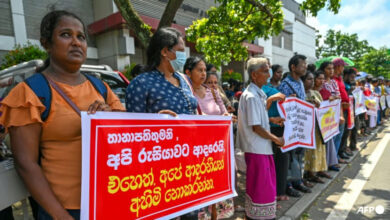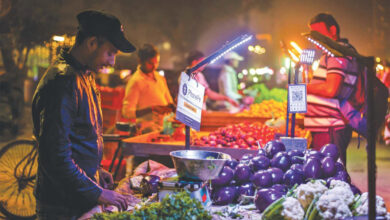South Asia struggles to address hunger as inflation soars
Floods in Pakistan, drought in India and the changing patterns of monsoon in Nepal are making it difficult to attain sufficent food production, experts say.

By Subin Adhikari
Kathmandu : South Asia is one of the fastest-growing economies in the world but it is also one of the most severely affected regions by malnutrition and food insecurity, experts said on Tuesday.
“Most of the countries in South Asia have red indicators associated with malnutrition,” said Shakeb Nabi, country director of Welthungerhilfe Nepal, a German aid agency working in the fields of development cooperation and humanitarian assistance. “Malnutrition is the most immediate problem to be solved in the region.”
Nabi was speaking at the two-day seminar titled ‘Promoting Nutrition Sensitive Agriculture for Improving Nutrition Security and Health of Smallholders in South Asia’, in Kathmandu, jointly organised by Welthungerhilfe and SAARC Agriculture Centre.
According to Global Nutrition Report 2022, 48.4 percent of women of reproductive age (15 to 49 years) suffer from anaemia and 26.4 percent of the infants have lower weight at birth in South Asia.
Similarly, 30.7 percent of the population in South Asia suffers from stunting.
The Southern Asia sub-region prevalence of wasting is 14.1 percent, which is way higher than the global average of 6.7 percent.

Welthungerhilfe said it has established more than 260 nutrition-smart communities in Nepal, India and Bangladesh to raise awareness among the locals about the importance of a nutritious diet for infants and females in the reproductive age.
As the majority of the farmers in the region are smallholders owning less than a half hectares of farmland, the outflow of youths from agriculture and climate crises have become a major factor in preventing malnutrition in the region, said the participants.
Bedu Ram Bhusal, Minister for Agriculture and Livestock Development, said a major part of the calorie intake of children and the youths comes from junk and processed foods which is also adding to the challenges of obesity and malnourishment.
“The conclusion and recommendations drawn from the seminar will be useful for the government to implement in solving real-world problems,” said Bhusal.
Experts stressed that although South Asia covers less than 4 percent of the world’s area, it hosts a quarter of the world’s population. Therefore, people in this region are more vulnerable to food insecurity.
Stephan Russek, head of development cooperation and economics of the German Embassy in Nepal, said that climate change is the most imminent threat to food security in South Asia.
“Floods in Pakistan, drought in India and the changing pattern of the monsoon in Nepal is making it difficult to attain satisfactory food production,” said Russek.
The experts said although there are more than 30,000 species of plants that are considered edible for humans, 75 percent of the calorie intake of humans comes from just 12 types of crops and five types of animals.
Out of that, 60 percent of the calories come from just three crops: rice, wheat and maize.
“The over-dependence on a small variety of food items can threaten our food security during crises such as Covid-19 and Russia-Ukraine war,” said Ganga Datta Acharya, senior program specialist at the SAARC Agriculture Centre.
“We need to diversify our food basket with an indigenous variety of food items which are abundant in South Asia,” said Acharya.
Tamanna Ferdous, the regional nutrition advisor of Welthungerhilfe, said that the rise in inflation after the Covid-19 pandemic in South Asia is now a major problem in attaining food security.
“An increment in the real food price by 5 percent increases poverty by 9 percent,” said Ferdous.“The poverty in South Asia was in a decreasing trend till 2019, but after 2020, it has increased.”
More than 50 experts in agriculture, food security and nutrition from the SAARC member countries are participating in the programme. They will share their experiences of how their countries are resolving the issue of food security and malnutrition, the organiser said.
Subin Adhikari
Adhikari is a sub-editor at the business desk.


![Mumtaz Zahra Baloch, spokesperson for Pakistan's Foreign Ministry, says the country believes in constructive dialogue with the US [Courtesy of Pakistan Ministry of Foreign Affairs]](https://southasiancorrespondent.com/wp-content/uploads/2024/06/pak-1-390x220.jpg)

